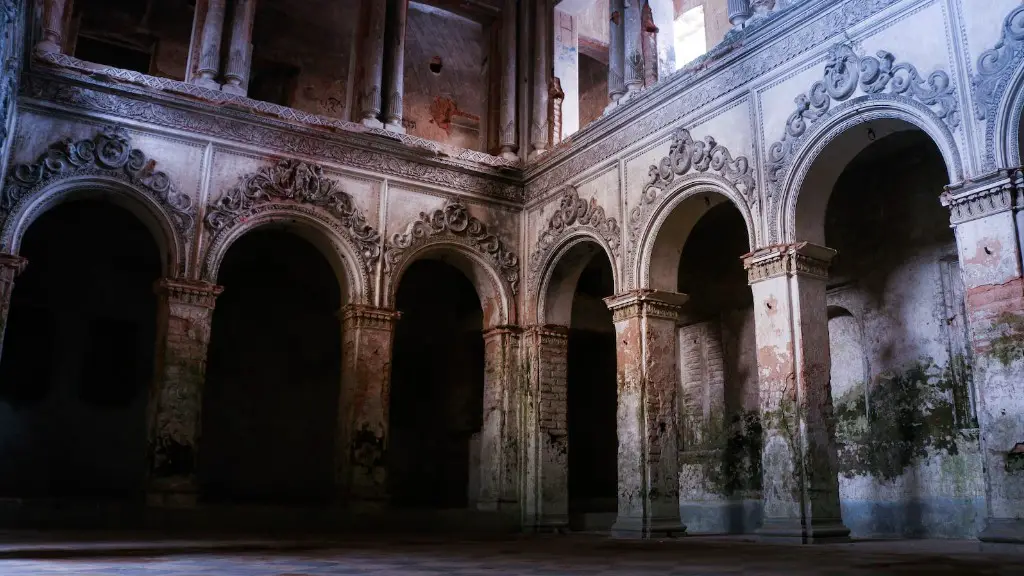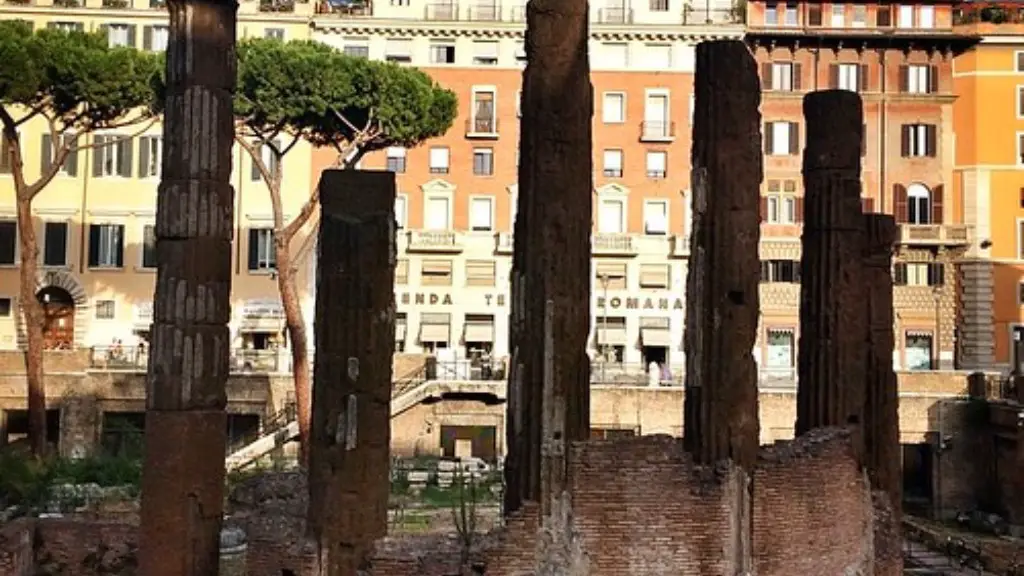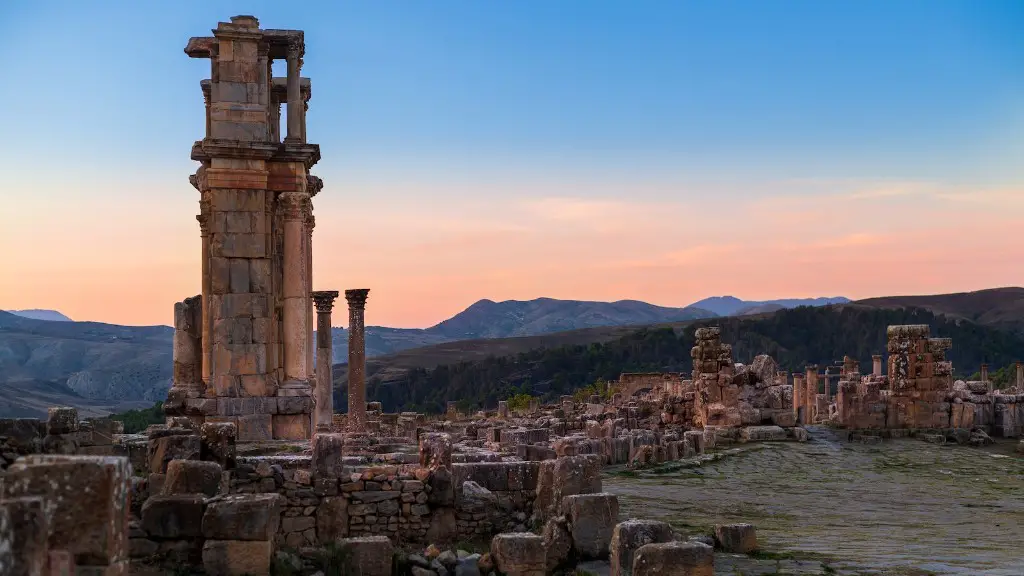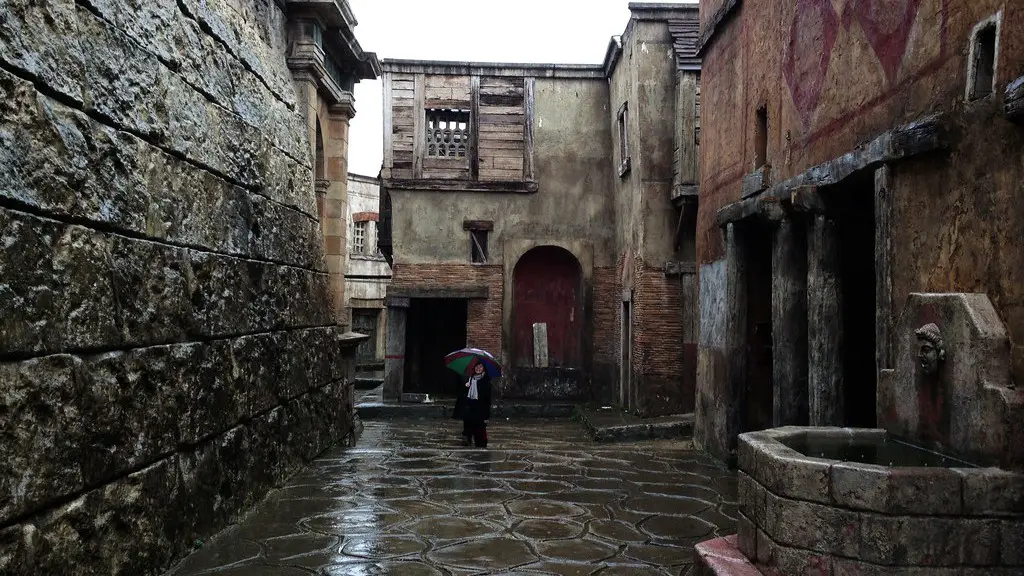Baths
Ancient Roman baths became very popular in the first century AD and were key to their hygiene practices. This was because Romans believed it was important to keep their bodies clean in order to maintain good health.Baths first emerged as a low and deep swimming pool that varied in size and function. For example, the baths of Diocletian mentioned by the Roman historian Suetonius designed walls bold and and several widespread rooms that housed cold or warm pools.Baths eventually became multifunctional and became popular among the upper classes where men and women could go and enjoy the warm waters. They were seen as a meeting point for social interactions and relaxation, as well as a place to practice physical exercise such as wrestling.
Private baths had an important role in the life of wealthy Romans, who in general had to pay three times a year for accommodation in public baths. These public facilities offered a combination of bathing, massaging, and even hair cutting services. Many fresh herbs and fragrances were also used in the practice. In many ancient Roman private homes, there were bathrooms and public baths also had public libraries, gyms, and even public toilets.
Use of Oil and Perfumes
Ancient Romans also relied on the use of oil and perfumes in order to keep their bodies clean and smelling good. They used olive oil to keep the skin moisturized and to protect it from the harshness of the sun’s rays. Natural products such as spices were used to give the freshly bathed a pleasant scent. In addition, perfumed flowers were also used to cover unpleasant odors. For example, rose petals were used during the process of bathing in order to provide a pleasant atmosphere.
Due to their cultural beliefs, this practice was also used in daily life by the wealthy and even when death came to someone’s house. To them, it symbolized a purification of the house from both physical and metaphysical entities that known to bring about death. People then would come to the house bearing perfumes and incenses to make sure to protect the house from any bad luck.
Other Hygiene Habits
Other hygiene habits of ancient Rome included the use of makeup and perfumes, the application of colors and dyes on the skin, the use of soap, and finally the practice of grooming. Makeup was very important, as it could provide a person with a more attractive and socially accepted face. Various mixtures of animal fats, natural oils, floral extracts, and minerals were used for its creation.
The use of soap was also important for hygiene in Rome. It was created using Asian plants, animal fats, and caustic soda. Finally, grooming was seen as a sign of good health. For example, both men and women brushed their hair daily and treated the skin of their bodies with various greases and oils.
Washing Garments
The ancient Romans also had particular habits when it came to washing garments. This task was especially important because the Romans believed that this was a way of purifying their souls. The wealthy were known to have baths every day, while poverty-stricken people were able to access public bathing facilities like mentioned before. Roman women were also responsible for the cleaning of the household’s clothing.
The process of washing garments usually began with washing them in plain water and then rubbing them on a flat stone or board. Special tools such as a brush were also used in order to clean tougher spots. Finally, the garments were hung up to dry.
Sanitation
Sanitation was an important part of hygiene in ancient Rome. The wealthy had private latrines, while public latrines were available to the poorer classes. In these public latrines, various creams and oils were used to keep them clean. In the city of Rome there were public sewers that channelled waste away from the city. Roman engineers also built aqueducts to bring in fresh water for the public.
However, ancient Roman lack of knowledge of germ theory, combined with population density as well as all the sewer and waste content of a major city resulted in a generally unhygienic environment. As a result, many infectious diseases spread among the population, and outbreaks of plague were common.
The Eye of Rome
The Eye of Rome or Testudo, in Latin was a huge outdoor public bath complex in Rome built in the first century AD by Emperor Nero. It was nicknamed the ‘Eye’ because of its round shape and it was used by both Roman aristocracy and the common people. The complex consisted of a series of hot and cold baths, massage tables and a swimming pool. Nutritionist, damsels, masseurs and wrestling schools provided various services.
The Eye was seen as a source of social gathering. Because of its magnificent structure and its various services, it catered to all sorts of people from different social classes, enabling them to bathe and socialize in the same space.
Public Health Concerns
The general health of Roman population was of great concern to emperors in ancient Rome. Emperors were keen to implement measures in order to keep the people healthy. They established a health care system centered around public bathing and exercising. Doctors were trained to provide medical advice and treatment. In addition, hospitals were set up to treat the sick, while public health campaigns were also conducted in order to promote good health among the population.
In addition, the ancient Romans also used a variety of treatments and methods to promote well-being, including massage, diet, herbal remedies, and acupuncture. Moreover, they had a surprisingly effective approach to the prevention of diseases. They enforced quarantine of those likely to become infected and established preventative practices such as hand washing and covering the nose and mouth when sneezing.
Lack of Awareness
Despite the various measures adopted, lack of awareness and accurate knowledge about diseases and its treatment was an issue for Roman civilization. The lack of adequate sanitary infrastructure, especially in public spaces, played a role in the spread of epidemics. Poor hygiene, the lack of clean drinking water, and polluted air caused many diseases such as malaria, dysentery, cholera and plague to be widespread.
In addition, people’s lack of understanding of the causes of many diseases, as well as their belief in supernatural forces and witchcraft also hindered their efforts to combat the spread of illnesses. This meant that many of their hygiene practices were ineffective at preventing diseases.
Conclusion
Hygiene was particularly important for the ancient Romans, as it was believed to be essential for good health and well-being. As such, various practices were adopted in order to keep their bodies clean and to ward off diseases. This included the use of oil, perfumes, and creams, as well as the construction of baths and public latrines. However, inadequate sanitary infrastructure, lack of knowledge of diseases, and superstitious beliefs ultimately hindered the effectiveness of Roman hygiene practices.




